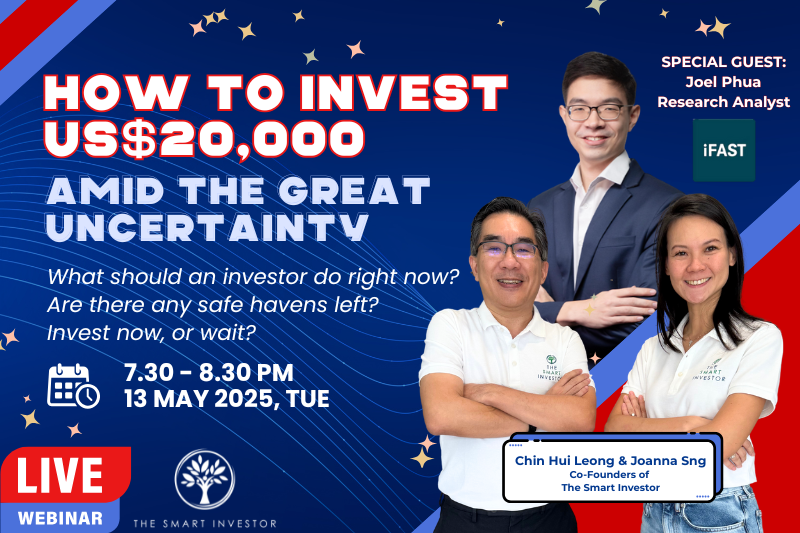There are many financial goals you may strive to achieve throughout your life.
Some of these goals may include buying your first house, getting married or having the financial means to start a family.
Yet, perhaps the most significant financial goal is to retire comfortably.
As you probably already know, the Central Provident Fund (CPF) is a mandatory social security savings scheme for Singaporeans.
When most of us start working, having 37% of our income locked up in CPF seems rather excessive.
However, this sum of money is actually being set aside to help us fund our retirement needs during our golden years.
What is CPF Life?
The CPF scheme comprises three accounts – the Ordinary Account (OA), Special Account (SA) & Medisave Account (MA).
When we turn 55, a fourth account known as the Retirement Account (RA) is formed.
Savings from our SA & OA will be transferred to our RA.
Depending on how much you have in your RA at age 55, the payouts you will receive from 65 years old onwards will vary accordingly.
The Basic Retirement Sum (BRS), Full Retirement Sum (FRS), and Enhanced Retirement Sum (ERS) serve as guideposts in helping you set aside savings for your desired retirement payouts.
As of 2022, the maximum payout you can receive under CPF Life is S$2,370 per month.
That is provided you have topped up your RA till the Enhanced Retirement Sum of S$288,000.
In addition, on your 55th birthday you will be given three plans to choose from – Basic Plan, Standard Plan & Escalating Plan.
Under the Standard Plan, the payouts are the highest at first but stay level throughout.
On the other hand, the Escalating Plan provides lower payouts initially that will increase by 2% every year for life.
This allows retirees to maintain their standard of living despite inflation.
Lastly, those who are more concerned with leaving a larger sum of money behind for the next generation should consider opting for the Basic Plan.
That is because the payouts under the Basic Plan are the lowest, which also means that the remaining amount that is left for beneficiaries will be higher.
CPF Life is an important component of the retirement income for most Singaporeans as it provides a basic level of financial security.
However, CPF Life alone may not be sufficient to cover all of your retirement needs.
Even if you do qualify for the maximum payouts under CPF Life, it may not be enough to support the lifestyle you desire in retirement.
You may plan to travel, pursue hobbies or take up new activities, all of which require additional sources of income.
After all, you will want to reward yourself after a lifetime of hard work.
In a recent study by OCBC Bank (SGX: O39), 34 percent of people in their 20s and 28 percent of those in their 30s were aiming for a retirement lifestyle that will cost almost S$6,000 a month.
Therefore, relying on CPF Life payouts alone is most likely insufficient to cover all your retirement expenses if you desire a higher standard of living.
As you age, the likelihood of you requiring medical treatment also increases.
With the surging in inflation, the cost of medical treatment will definitely be higher down the road.
Furthermore, your hospitalisation expenses can easily balloon up to a few hundred thousand dollars in a single hospital bill, depending on the kind of treatment that is required.
To protect yourself from such hefty fees, it is crucial that you get yourself adequately covered with a private hospitalisation and critical illness insurance while you are young and healthy.
In addition, you may want to consider getting a CareShield Life supplement which gives higher monthly payout amounts should you become severely disabled.
While CPF Life is a valuable part of your retirement income, it is also important to consider other sources of income to ensure that you have enough for your retirement.
1. Annuities
To obtain greater assurance that you will have enough income every month during your retirement, you can consider complementing your CPF Life payouts with an annuity.
Essentially, an annuity plan works the same as CPF Life – you pay a lump sum at the start and then you start to receive regular payments from the payout start date.
There are many different annuity plans available, with each having its own customisable features.
Some of the companies that provide annuity plans include AIA Group (SEHK: 1299), Aviva & NTUC Income.
Rather than keeping a lump sum in the bank, why not consider leaving it in an annuity that pays you an income every month instead?
Annuities can generate long-term returns of four to five percent per annum, which go a long way to ensure your savings are not eroded by inflation.
2. Dividend stocks & Real Estate Investment Trusts (REITs)
For investors with a higher risk tolerance level, another stream of income you can consider is via investing in a well-diversified portfolio of dividend stocks and REITs.
Many dividend stocks and REITs pay a dividend yield of around four to five percent.
One example of a REIT is Mapletree Industrial Trust (SGX: ME8U), which has been giving investors a consistent dividend yield of at least 5% for the past year.
As for OCBC Ltd, Singapore’s second largest bank reported a trailing twelve month (TTM) dividend of S$0.56 as of 22 February 2023.
At its current share price of S$13.05, this translates into a dividend yield of 4.3%.
On top of using cash, the government has also introduced the CPF Investment Scheme (CPFIS) which provides members with the option to invest their CPF savings in various financial products.
Currently, the Ordinary Account (OA) pays out an almost risk-free interest rate of 2.5%, with an additional 1% paid out for the first S$20,000.
If you plan to grow your CPF at a faster clip, you can consider buying stocks that can potentially provide you with returns higher than 2.5%.
The advantage of making your own investments is the liquidity that it provides, as shares can be bought and sold anytime.
On the flip side, equity investments come with a certain amount of risk, which means there is a chance of losing some or all of your retirement savings.
3. Unit Trusts
That said, only up to 35% of your OA savings less the first S$20,000 can be invested in stocks.
In addition, only holdings listed on the Singapore Stock Exchange (SGX) (SGX: S68) can be purchased using CPF.
For more savvy investors, you can still invest the remainder of your OA savings in equities outside of Singapore via unit trusts.
While CPF Life is a valuable part of your retirement income, it is important to consider other sources of income to ensure that you have enough to cover all your retirement expenses and support the lifestyle you want.
If you’re nervous, confused, or worried about buying your first stock, then our latest beginner’s guide to investing can help. It’s easy to read yet packed with valuable insights. Download it for free today, and buy your first stock in the next few hours. Click here to get started.
Follow us on Facebook and Telegram for the latest investing news and analyses!
Disclosure: The author does not own any of the shares mentioned.




